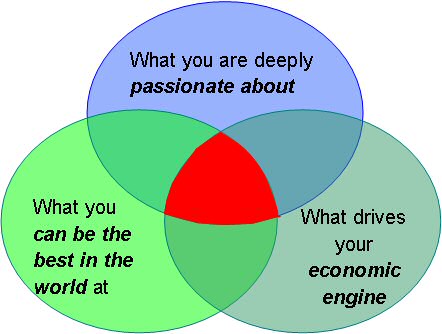It is now time to talk about the Hedgehog concept of Jim Collins.
Basics
In this famous essay “The Hedgehog and the Fox”, Isaiah Berlin divided the world into hedgehogs and foxes, based upon an ancient Greek parable: “The fox knows many things, but the hedgehog knows one big thing.”
Those who build the good-to-great companies were, to one degree or another, hedgehogs. They used their hedgehog nature to drive toward what we came to call a Hedgehog Concept for their companies. Those who lead the comparison companies tended to be foxes, never gaining the clarifying advantage of a hedgehog concept, being instead scattered, diffused, and inconsistent.
The essential strategic difference between the good-to-great companies and the comparison companies lay in two fundamental distinctions. First, the good-to-great companies founded their strategies on deep understanding along three key dimensions – what we came to call the three circles. Second, the good-to.great companies translated that understanding into a simple, criytline concept that guided all their efforts – hence the term Hedgehog Concept.
The three circles
A Hedgehog Concept is a simple, cristaline concept that flows from the deep understanding about the intersection of the following three circles:

1. What you can be the best in the world
(and equally important, what you cannot be the best in the world at). This discerning standard goes far beyond core competence. Just because you posses a core competence doesn’t necessarily mean you can be the best in the world at it. Conversely, what you can be the best at might not even be something in which you are currently engaged.
2. What drives your economic engine
All the good-to-great companies attained piercing insight into how to most effectively generate sustained and robust cash floww and profitability. In particluar, they discovered the single denominator – profit per x – that had the greatest impact on their economics (It would be cash flow per x in the social sector).
3. What you are deeply passionate about
The good-to-great companies focused on those activities that ignited their passion. The idea here is not to stiulate passion but to discover what makes you passionate.
Example: a personal analogy
Suppose you were able to construct a work life that meets the following three tests:
- You are doing work for which you have a genetic or God-given talent, and perhaps you could become one of the best in the world in applying that talent.
=> “I feel I was just born to be doing this” - You are well paid for what you do.
=> “I get paid to do this? Am I dreaming?” - You are doing work you are passionate about and absolutely love to do, enjoying the actual process for its own sake.
=> “I look forward to getting up and throwing myself into my daily work, and I really believe in what I’m doing.”
If you could drive toward the intersection of these three circles and translate thet intersection into a simple, cristaline concept that guided your life choices, then you’d have a Hedgehog Concept for yourself.
